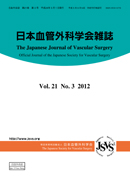Volume 16, Issue 4
Displaying 1-10 of 10 articles from this issue
- |<
- <
- 1
- >
- >|
-
2007 Volume 16 Issue 4 Pages 16_4_i-16_4_ii
Published: June 25, 2007
Released on J-STAGE: June 28, 2007
Download PDF (41K)
-
2007 Volume 16 Issue 4 Pages 607-612
Published: June 25, 2007
Released on J-STAGE: June 28, 2007
Download PDF (382K) -
2007 Volume 16 Issue 4 Pages 613-614
Published: June 25, 2007
Released on J-STAGE: June 28, 2007
Download PDF (59K)
-
2007 Volume 16 Issue 4 Pages 615-618
Published: June 25, 2007
Released on J-STAGE: June 28, 2007
Download PDF (65K)
-
2007 Volume 16 Issue 4 Pages 619-623
Published: June 25, 2007
Released on J-STAGE: June 28, 2007
Download PDF (93K) -
2007 Volume 16 Issue 4 Pages 625-628
Published: June 25, 2007
Released on J-STAGE: June 28, 2007
Download PDF (136K) -
2007 Volume 16 Issue 4 Pages 629-632
Published: June 25, 2007
Released on J-STAGE: June 28, 2007
Download PDF (97K) -
2007 Volume 16 Issue 4 Pages 633-636
Published: June 25, 2007
Released on J-STAGE: June 28, 2007
Download PDF (95K) -
2007 Volume 16 Issue 4 Pages 637-640
Published: June 25, 2007
Released on J-STAGE: June 28, 2007
Download PDF (100K) -
2007 Volume 16 Issue 4 Pages 641-644
Published: June 25, 2007
Released on J-STAGE: June 28, 2007
Download PDF (99K)
- |<
- <
- 1
- >
- >|
